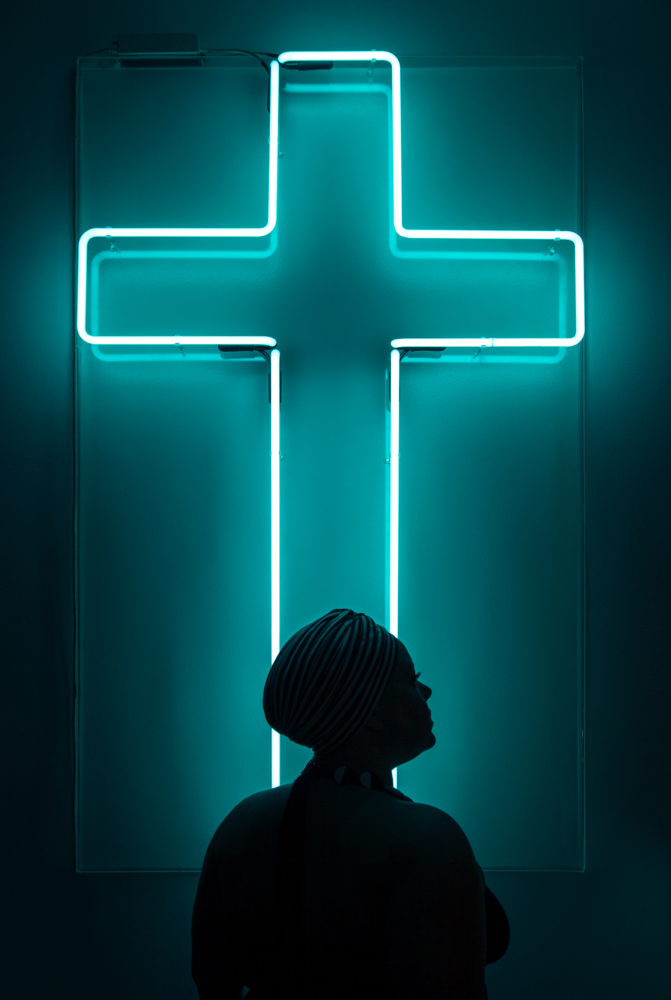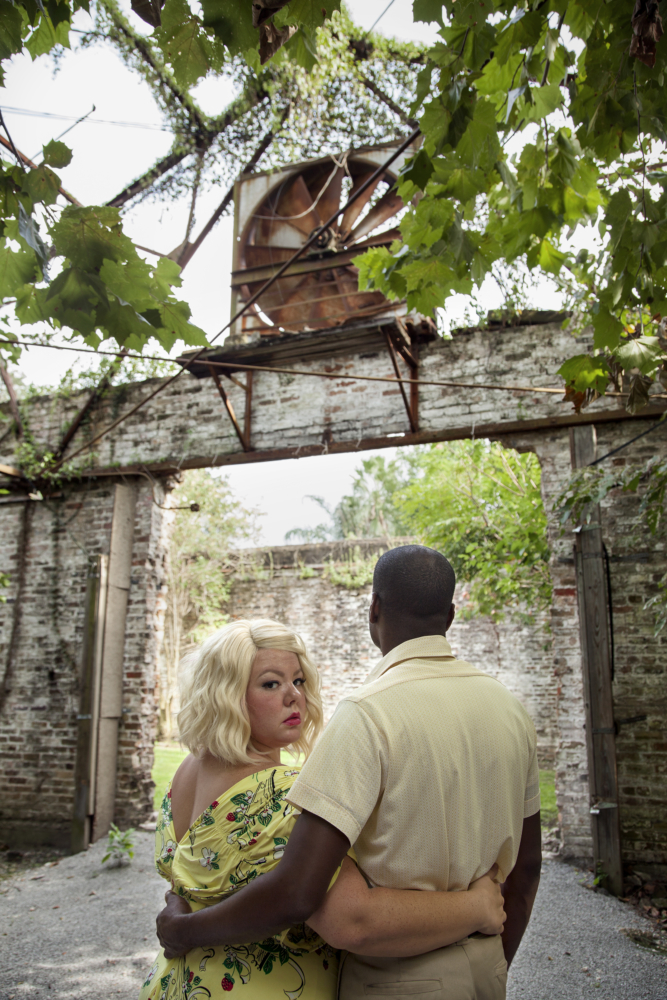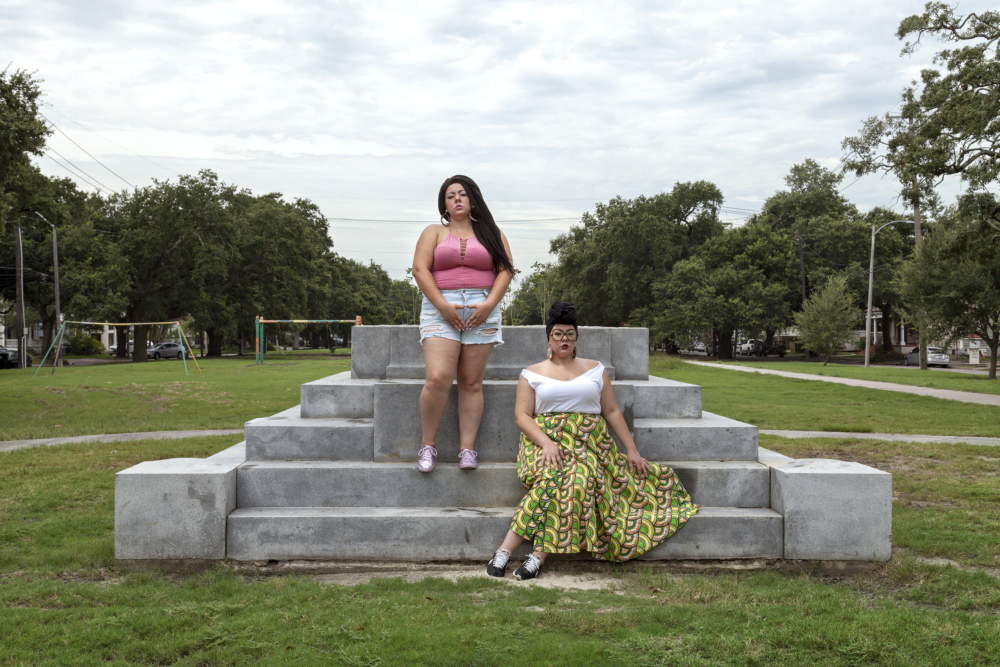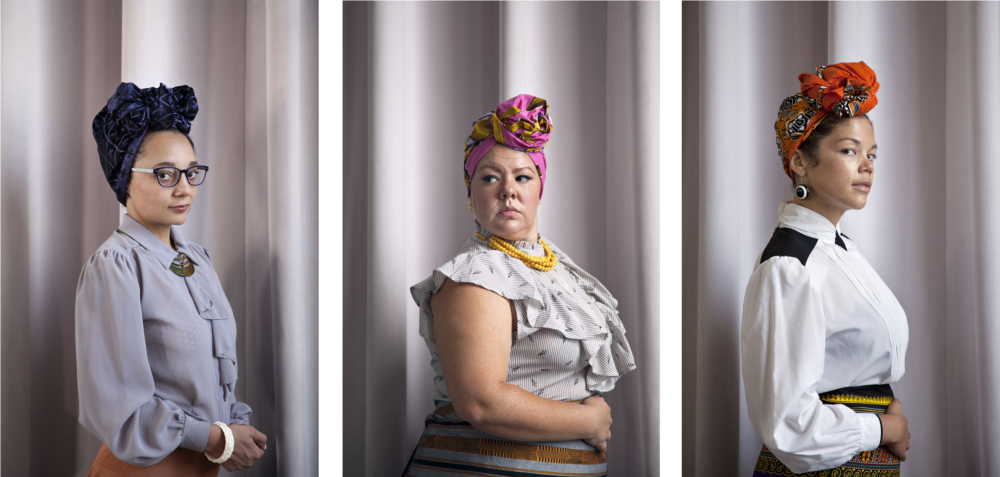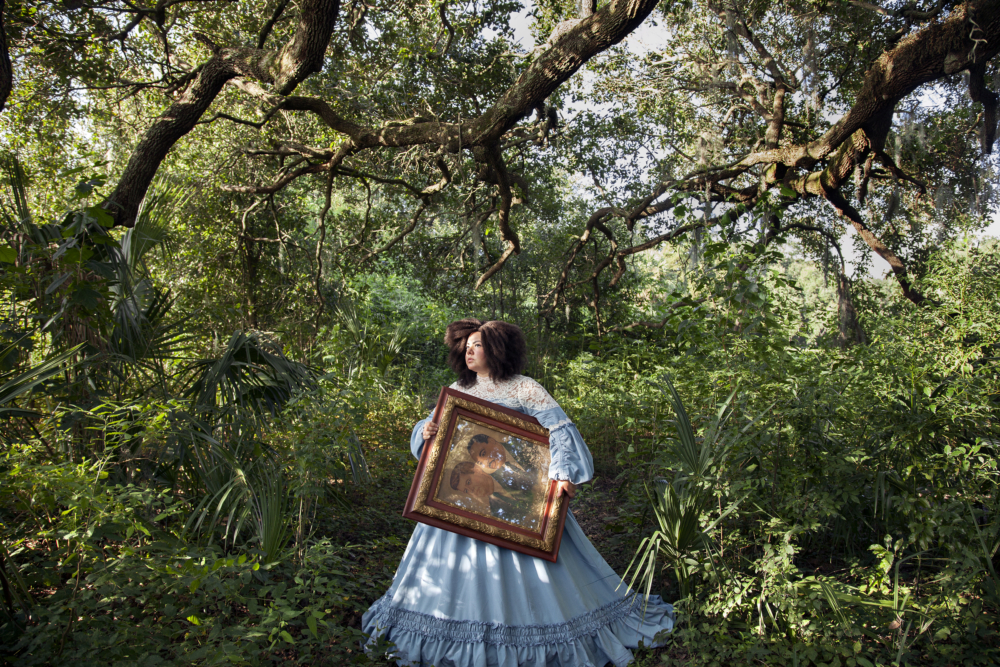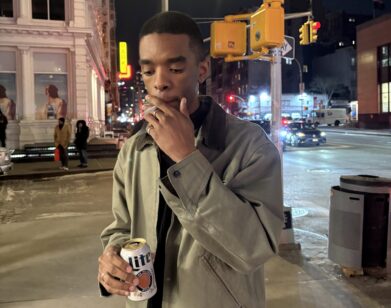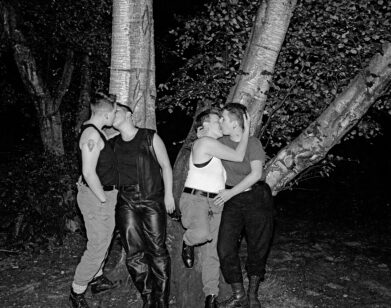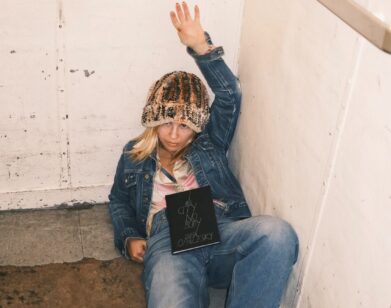How one artist explores biracial identity through elaborate self-portraits
Genevieve Gaignard is a chameleon. One day she is a cat lady, the next she is in a shirt that reads “Hoodrat Thangs” with braided hair, and the day after that she is a 1950s housewife. “At the end of the day it’s my story,” the 36-year-old explains over the phone. All of these characters originate with her and represent an extension of her biracial, female identity. Gaignard, a Los Angeles based artist, takes self-portraits in elaborate domestic installations that provide a window into the lives of her numerous personas.
Gaignard’s current show, Grassroots, is part of the triennial Prospect.4: The Lotus in Spite of the Swamp in New Orleans. The Big Easy provided plenty of inspiration for Gaignard—the exhibition includes an installation of a domestic space modeled after her father’s Southern upbringing. The other space is made up of church pews and mirrors intended for self-reflection. Gaignard has made 10 new character portraits inspired by the history of the location and her own personal connection to the city. She references the Tignon law, the removal of a confederate monument, and the antebellum wardrobe.
For someone who usually appears alone in her self-portraits, this time Gaignard decided to swap solitude for some company. “The reason that I felt inclined to bring other people into my work was this feeling of connecting with someone. There’s something about the melting pot of New Orleans that you can go there and somehow people read you as who you are.” The authentic relationship is felt between the subjects because Gaignard was able to relate to their stories and experiences. In order to move forward, Gaignard says, it is necessary to look at the past. “I usually say the work that I just made informs the work that I make next.” To help get a glimpse of what is to come, the artist shared some insights into a few of her new photographs.
GLOW UP (ABOVE)
GENEVIEVE GAIGNARD: To glow up is to go from the bottom to the top point of disbelief. That neon was from the HBO show True Detective that was shot in Louisiana. This was a new way of taking pictures because it’s me, but it’s maybe not clear that it’s me. The subject is in shadow. I like to place symbols of religion in the work as more of a critique. You go to church and claim to be this one way, but you don’t act that way. In the show, this photograph is above mirrors so the viewer becomes part of the work and has to sit and self-reflect as opposed to make judgements.
STAR-CROSSED COLOR LINES
GAIGNARD: I’ve introduced new people into the work where I’m usually just photographing myself. When others look at this they’ll see an interracial couple, but from my own personal story I was thinking about my grandparents. My grandmother was very fair skinned and often my grandparents would be walking together and my grandfather would be asked why are you walking with that white woman. You get this feeling that I’m looking back at the camera in this almost worried way, kind of facing someone that’s maybe putting judgement on these two being together.
THE RISE AND FALL (TAKE EM DOWN)
GAIGNARD: So that was shot on the base of the Jefferson Davis monument that was taken down. Take Em Down is the name of the group of people in New Orleans who were trying to get all of these statues taken down. I wanted to put these strong women of color as the thing to now look up to. I wanted to see these seemingly different types that could be sisters or friends and no matter their differences they could still be powerful in their own right.
TIGNONS IN WAITING
GAIGNARD: The Tignon law was passed in 1786 so that women of color could clearly be distinguished from the white women. As the story was told to me, it was assumed that these women would just put plain, boring fabrics on their head, but instead they imported beautiful silks and would add embellishments to the fabrics. They would then stand out in the ways the white women didn’t want them to in the first place. It’s kind of like if you take my hair away, I’m still going to be this amazing badass version of myself.
TRAILBLAZER (A DREAM DEFERRED)
GAIGNARD: When I look at it I see this person from the past that has collected this image from another time in the past and is bringing it back to show what happened in the future. So the trailblazer is setting the path for something new to move forward. I found [the painting of John F. Kennedy and Martin Luther King] in the French quarter, just in an antique shop. It’s really playing with time and bringing it back in time and forward in time. (A Dream Deferred) is taken from the Langston Hughes’ poem, “Harlem.”
GRASSROOTS IS NOW ON VIEW AT THE ACE HOTEL IN NEW ORLEANS.

